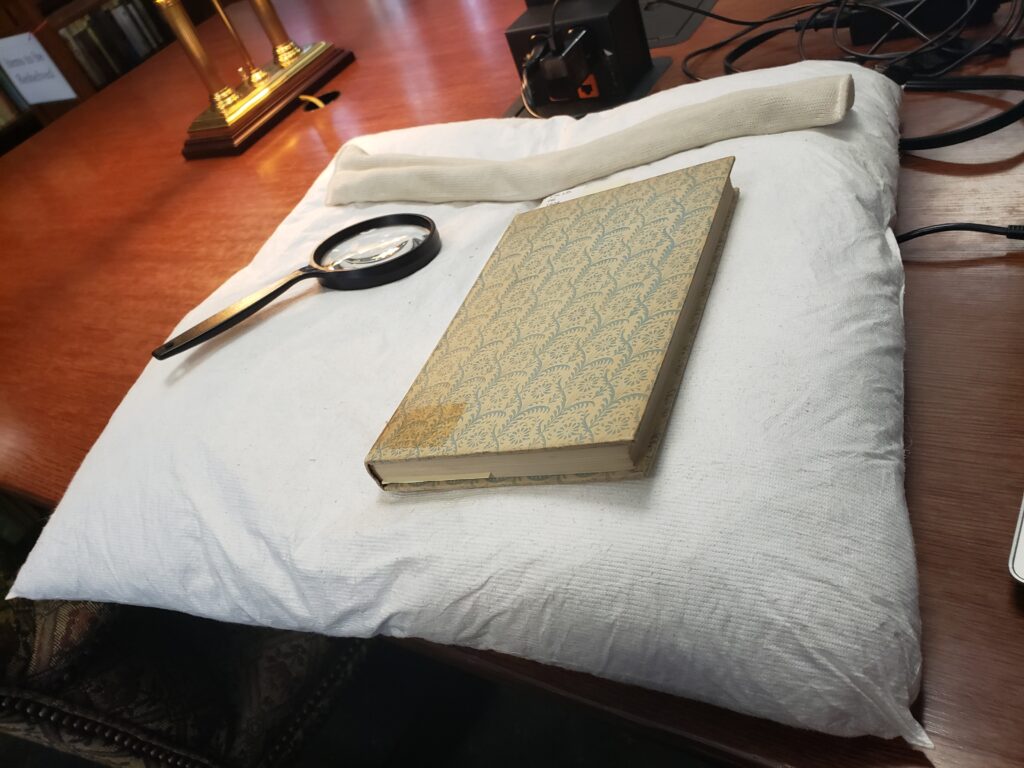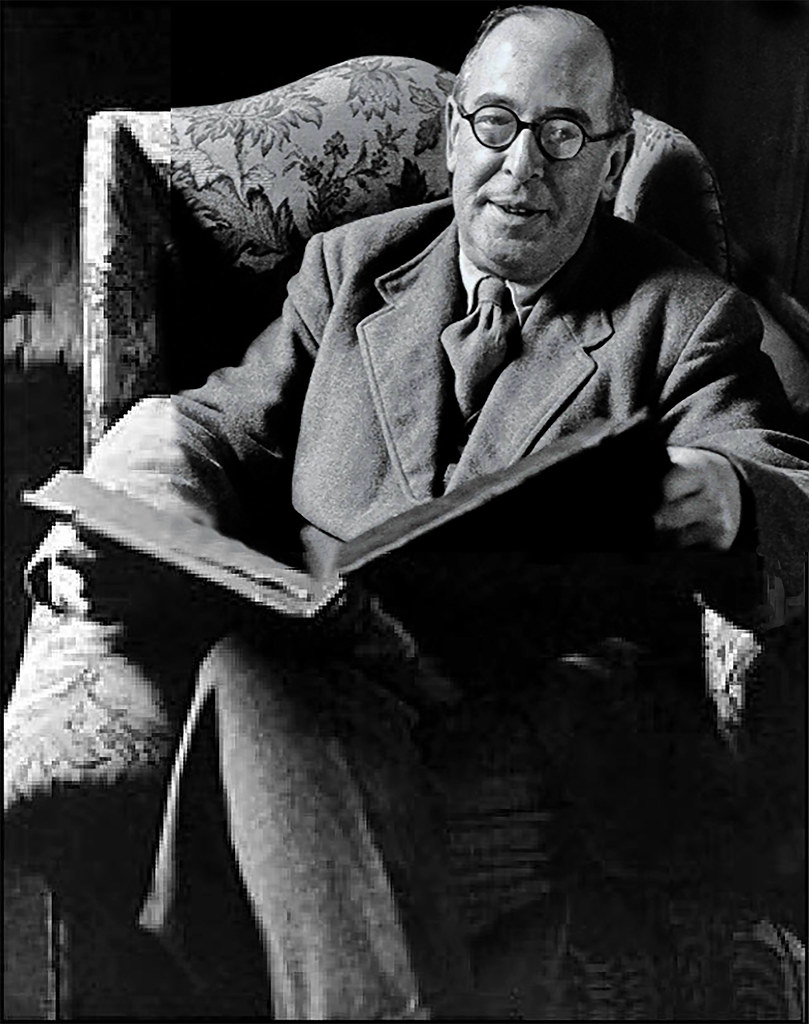While researching my latest C. S. Lewis book, Many Times & Many Places: C. S. Lewis & the Value of History, I had the opportunity to take advantage of the Wade Center’s collection of books that Lewis himself owned and read. So, in the process of working on the book that was published in 2023, I also realized that the research I was doing for it would make for a good journal article. I’m more than pleased that the Wade found my submission worthy of publishing.
The newest volume (40) of VII: Journal of the Marion E. Wade Center includes as part of its online offerings my article (along with help from my co-author of the book, Jamin Metcalf) entitled, “The Historical Perspective: Gleanings from C. S. Lewis’s Personal Library.” You can access the full article here. But I would like to give you a preview of what it’s like to have books in one’s hand that C. S. Lewis not only touched but read thoroughly and left his “mark,” so to speak, in each one.
These are rare books and must be handled carefully. As you can see, I was given a pillow on which to lay them, a soft mini-type pillow to use just to keep the books open to the page I was working on, and, quite usefully, a magnifying glass to help decipher some of Lewis’s writing. That truly came in handy more than once.
Why take the time to look at these books? What did they have to offer? Let me share some of the opening paragraphs from the article to help answer those questions.
Of all the C.S. Lewis treasures residing at the Marion E. Wade Center at Wheaton College, perhaps one of the most fascinating is the collection of books Lewis possessed in his own personal library. Since they are books by other authors, one might wonder what value they have beyond recognition of Lewis’s choice of books. That alone can reveal something of his mind and his interests, of course. Yet simply seeing a list of books that he owned is only a starting point for an analysis of their importance. More is needed if one wishes to understand how Lewis responded to the books he read.
Fortunately, Lewis gave us clues—sometimes vague, other times more direct—for what he thought about what he read. Lewis was an interactive reader, constantly underlining and/or marginal-lining phrases, sentences, and even whole paragraphs. Further, he often inserted commentary on some of those markings, providing more insight into his reaction to what an author had written.
Lewis’s annotations obviously offer more specific guidance into his thoughts, as he sometimes even wrote summaries of each page’s focus. These summaries show how he processed each page in a book, extracting what he believed to be the author’s most salient points. Additionally, when one sees a book that Lewis painstakingly summarized, one knows he considered it to be worth the extra time involved in penning that summary; the book was significant enough, in his view, to merit the effort.
But when it comes to markings that have no annotations, how is one to evaluate those? Does an underlined section indicate Lewis’s agreement with what he marked, or is it an indication of the opposite? Familiarity with Lewis’s published works and letters can provide the key to those questions. In fact, the more one examines the markings, the more one can see connections to Lewis’s own writings. Sometimes, one can see where he either got an idea that showed up in his writings later or something that is in concert with what he had already written. Disagreements with what he marked more often show up in the annotations. For instance, it’s not difficult to know what Lewis thinks about a certain chapter in one of the books when he writes, “This whole chapter is nonsense.”
Delving into the Lewis Library can be daunting without a specific research goal. The research for this essay focuses on Lewis’s views of history, particularly regarding historicism and periodization, and whether those views are confirmed through the notations and annotations he made in the books of his personal library.
Did I achieve that goal? Well, I like to think I did. But you can check out the article yourself and come to your own conclusion. Many thanks to the Wade Center for thinking that my effort was worth publication. I am grateful that the time I put into this research has found an outlet.



